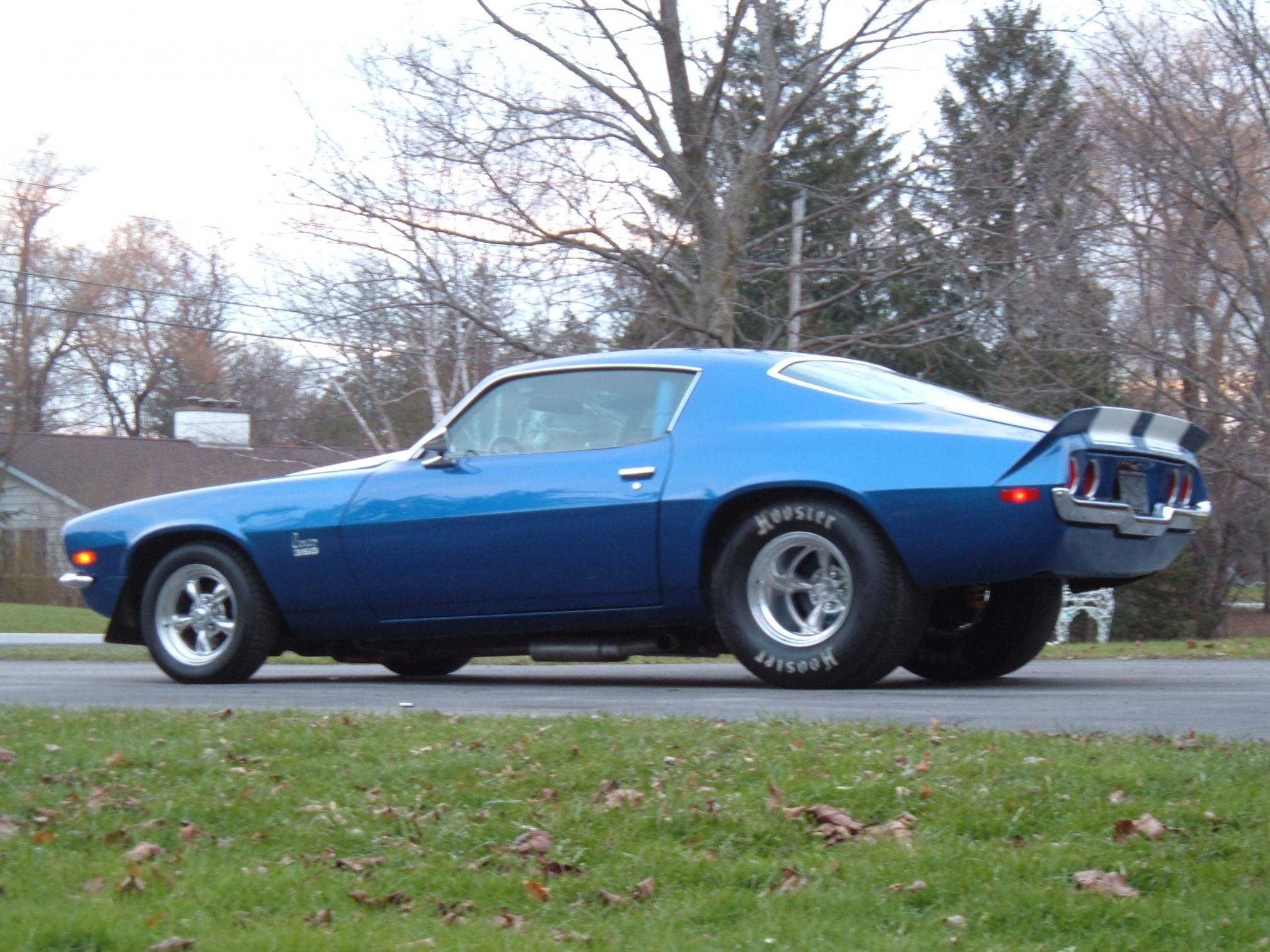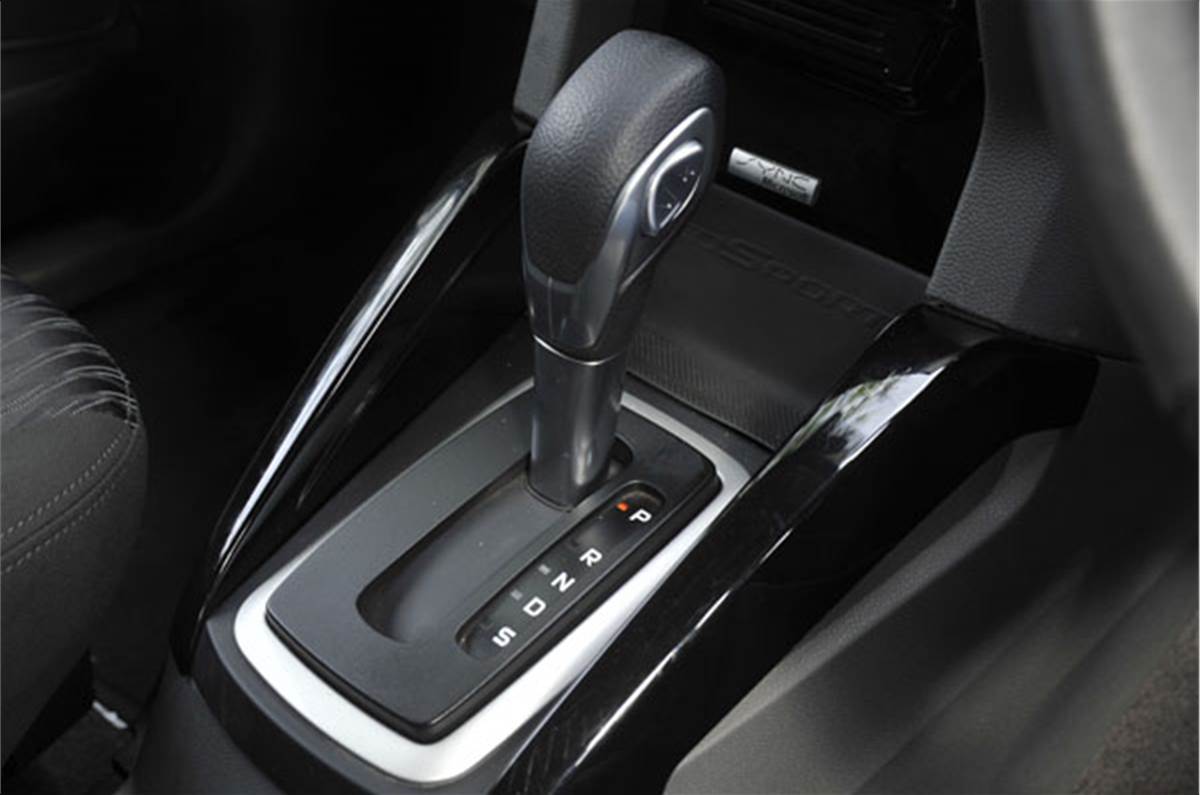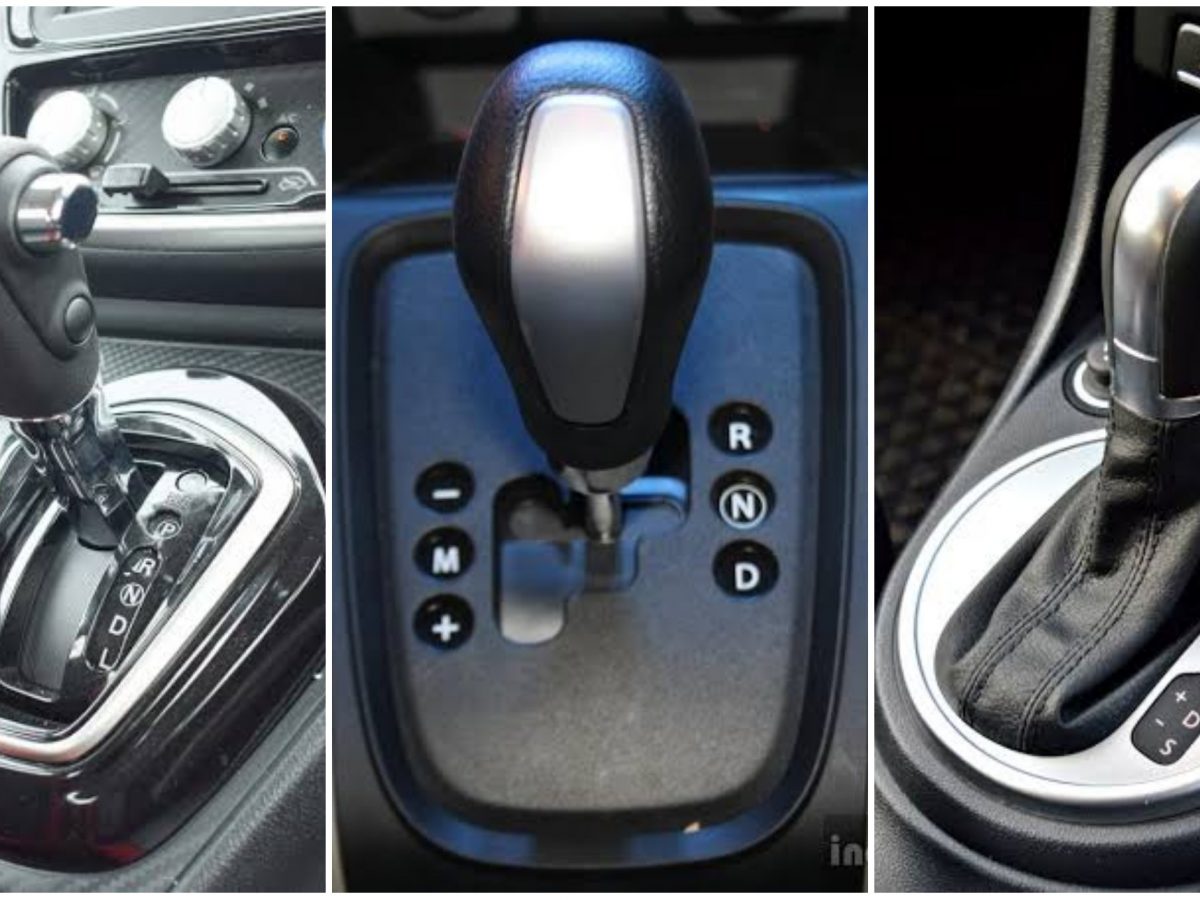A Multimode Manual Transmission (MMT or M/M, also Multimode Transmission)[1] is a type of automated manual transmission offered by Toyota. It uses a traditional manual gearbox with a computer-controlled hydraulicclutch. Multimode Manual Transmission is available in the Aygo, Yaris, Corolla, Corolla Verso, Mark X and Auris in Europe, and should not be confused with Multimode Automatic Transmission, which is offered in the North American market by Toyota.

Operation[edit]
- More known as a torque converter automatic, this widely-used automatic transmission can be found in almost every car. This transmission uses a hydraulic fluid coupling or a torque converter to do the job of changing gears instead of a clutch.
- Drive, of course, covers all the forward gears — and because an automatic transmission selects those gears automatically based on throttle position, vehicle speed and other factors, Drive is the.
The Multimode Manual Transmission has the following gears: R, N, E, M+, M-.
Oct 30, 2018 A car needs a full working transmission (or gearbox) in order to allow the vehicle to change gears, but the inner workings of a vehicle differs greatly between a manual transmission car and an automatic transmission car.
- R: R is the reverse gear. It is similar to R in both traditional manual and in fully automatic cars.
- N: N is the neutral gear. It is similar to N in both traditional manual and full automatic.
- E: E is the functional equivalent of D in a full automatic. As the gearbox in a MMT car is a manual gearbox, instead of one with a torque converter (as in a traditional automatic), gear changes are noticeable. The accelerator should be eased off, slightly, when gear changes occur. This facilitates a smooth transition, between gears, and allows for smooth acceleration.
- M+: Up-shifts a gear in sequential fashion, from M1 to M5 (M6 in 6-speed MMT cars).
- M- : Downshifts a gear in sequential fashion, from M5 (M6 in 6-speed MMT cars) to M1.
Differences from an automatic car[edit]
A Multimode manual car has a clutch instead of a torque converter. As such, gear changes are noticeable, and the car rolls backwards when on an up-sloping incline.
- Creeping: A Multimode Manual Car creeps forward when the brake pedal is released and accelerator is not depressed, like an automatic car. This is achieved via partially engaging and slipping the clutch.
- Moving off from an incline: A MMT car rolls backwards when on an up-sloping incline, unlike an automatic car. To move off from an up-sloping incline, apply handbrake before depressing the accelerator slightly. Do not hold the car on an incline by depressing the accelerator pedal, as the slipping clutch will overheat and lead to clutch damage.
- Parking: Unlike an automatic car, the P gear is absent in a MMT car. The car should be parked in the following fashion. In an up-sloping incline, put the gear to M1, or E, apply handbrake, and switch off the engine. In a down-sloping incline, put the gear to R, apply handbrake, and switch off the engine. On level ground, put the gear to R, apply handbrake, and switch off the engine. R or E/M1 substitute the P function in a full automatic.
- Moving off from Park: The engine can only be started with the gear in N. To start, switch on the car to ON position (this releases the gear lock), depress brake pedal, put the gear to N (from either R or E/M1), and switch on the engine.
- L/1 and 2 gears in a full automatic: The MMT does not provide L/1 and 2 gears as in a full automatic. One action of the MMT system is that it detects the gradient of the slope that the car is situated in. On a down-sloping incline and if the brake pedal is depressed, it automatically selects a lower gear to produce engine brake, which has the equivalent effect of L and 2 gears in a full automatic. L and 2 can also be substituted with E1 and E2 (not available in Aygo) or M1 and M2 gears in a MMT car. To select E1 or E2, put the gear to E, and use + and - pedal flaps on the steering wheel to override the computer selection. E will change to E1/E2/E3/E4/E5/E6, depending on the gear selected. Downshift to E1 or E2 as appropriate to simulate L and 2 gears in a full automatic. To select M1 or M2, put the gear to M, and use M- gear to downshift the gear to M1 or M2.
- Kick-down: In E mode, the kick-down function in a full automatic can be similarly activated in an MMT car. Additionally, the kick-down function can be manually activated using the - pedal flap on the steering wheel in E mode. This overrides the computer setting and E changes to E1/E2/E3/E4/E5/E6. To stop the manual override under E mode, pull and hold the + flap on the steering wheel, until the E1/E2/E3/E4/E5/E6 changes back to E. Alternatively, wait for the next computer activated gear change.
- Reverse: The car reverses as in an automatic car. To reverse, depress brake pedal, and change the gear to R. Gradually lift off the brake pedal to allow the car to creep backwards. On a down-sloping incline, the creep function, simulated using the slipping clutch, is not sufficient to prevent the car from rolling forward. In this case, the car must not be held still using the accelerator pedal, as the excessive clutch slipping will lead to clutch damage. Handbrake should be instead applied, and the accelerator pedal should be depress slightly.
- Gear change: The gear change in MMT is noticeable, unlike in a full automatic car. Under E gear, the car will automatically change the gear depending on speed and gradient information. It is recommended that the accelerator pedal should be momentarily lifted off during gear change. A constant throttle can also be maintained on the accelerator, and gear change can still occur, although the car will feel noticeably more jerky during gear change than in a full automatic.
Operation under E mode[edit]
The E mode functions as the D gear in a full automatic car. Via the onboard computer and electronic clutch, the car automatically selects the appropriate gear based on speed and gradient information. An MMT car limits the highest gear selectable, if the gradient is steep.
- L and 2 gear in a full automatic: The L and 2 gear in automatic can be simulated in an MMT car by either using E1/E2 or M1/M2.
- Es mode: Es mode allows more dynamic and sporty driving with faster gear changes, at the expense of greater fuel consumption. Es mode is available in the Yaris and Auris (in Europe). Es mode is similar to the S mode in Direct-Shift Gearbox.
Operation under M mode[edit]
Under M mode, sequential gear shifts can be made by changing the gear to M+ and M-. Under M mode, the gear selected will be displayed as one of M1/M2/M3/M4/M5/M6 on the dashboard. Under M mode, the gear will not change even if the engine RPM reaches redline, which will probably lead to engine damage. However, the user is prevented from excessively downshifting to a gear that exceeds the maximum revolution possible for the engine, or excessively upshifting to a gear that may lead the engine to stall. When the car is braked to a complete stop, the M1 gear is automatically selected.
Competitors[edit]
Operationally similar systems are the Direct-Shift Gearbox offered by Volkswagen AG, Selespeed offered by Alfa Romeo, I-SHIFT offered by Honda, Auto Gear Shift offered by Suzuki, ESCOT by UD Trucks, and Dacia Easy-R by Renault Group's Dacia. Other technologies that produce automatic transmissions are the conventional automatic transmission and continuously variable transmission. For example, continuously variable transmission is implemented as the MultiDrive S in Toyota iQ.
See also[edit]
References[edit]

- ^'MMT - MultiMode manual transmission'. UK: Toyota. Archived from the original on 2012-04-13.
External links[edit]
Automatic Car Gears Explained
A picture of the multi-mode transmission on left-hand drive vehicle. [1][2] Autodesk revit 2014 xforce keygen download.
When your grandfather was a kid, every car had three pedals and learning how to work a clutch was a rite of passage. Today, though, there is an unprecedented number of gearbox arrangements, each with its positives and negatives. Figuring out what all the acronyms and cryptic descriptions mean can be daunting, but the functions of these highly complex mechanical wonders are actually fairly straightforward. Let’s crack open the transmission case and take a look at what makes each transmission type unique.
1. Manual transmission
The simplest and oldest type of transmission still in use is the trusty manual. This gearbox uses a friction clutch modulated by the driver’s foot to connect the engine’s rotational energy to the transmission’s input shaft. From there, a fixed set of gears are engaged using a syncro and gear-selector fork connected to the shifter operated by the driver’s right hand (or left, in certain countries).
It’s gone by a variety of names over the years — manual, stick shift, standard, three, four, five, or six speed — but whatever you call it, there’s no denying that the trusty manual is an endangered species, at least in the U.S. Fewer and fewer new car models are offering a row-it-yourself gearbox and an ever-increasing percentage of the driving public doesn’t seem toknow how to use one.
In spite of the grim outlook for its future, the manual has a lot of advantages over the newer and more complicated options. The stick shift’s simplicity means that it’s less likely to need expensive repairs than any other transmission type, and if it does have a problem, it’s likely to be cheaper and easier to fix.
For decades, the standard was the only choice when it came to performance and virtually every race and sports car on the planet was equipped with one. In recent years, though, the manual has been eclipsed by the Dual-Clutch or semi-auto transmission in most high-end performance cars. However, it still offers better performance than most automatics and virtually all CVT transmissions. And fuel economy is a similar story. Up until recently, drivers who chose to shift their own gears enjoyed demonstrably better fuel economy than those who didn’t. Automatics, with their ever-increasing gear count, have now substantially narrowed the gap.
Aside from its inherent simplicity, performance, and fuel economy, perhaps the most compelling case for the venerable stick shift is the driving experience itself. For true driving enthusiasts, nothing can beat the feeling of a perfectly timed shift on a good old manual.
2. Automatic transmission
The ubiquitous automatic is by far the most common transmission on the road today. It uses a highly-complex torque converter to transmit the engine’s rotational energy, while gear shifts are controlled by the vehicle’s computer and accomplished with a planetary gear set and a series of clutches and brakes.
Though the behind-the-scenes action is quite complicated, all the driver has to do is select from the familiar P-R-N-D-L choices on the gear selector. The advantage is, of course, a simplified driving experience and a gentle learning curve. The trade-off for the driving simplicity is mechanical complexity, which makes the automatic more prone to failure and pricier to fix.
Though most automatics can’t match a manual transmission for performance or fuel economy, modern examples are much closer than previous generations. Some late-model cars are equipped with transmissions boasting eight or even nine forward gears.
3. Continuously variable transmission (CVT)
The CVT offers a similar driving experience to an automatic, but operates using a completely different mechanism. In fact, the CVT doesn’t have gears at all — instead, it uses a system of belts and pulleys to produce an infinite range of ratios. The car’s computer decides how to adjust the pulleys to create the optimal ratio for the particular driving situation. This creates the CVT’s primary advantage: fuel economy. No other transmission type can offer more MPGs than a CVT (yet).
Since they’re not as complicated as automatics, CVTs are less prone to failure and costly repairs (though not as much so as manuals). Their biggest drawback may be a subjective one — the driving experience. Since there are no gearshifts, just smooth and seamless acceleration, CVTs may leave a true driving enthusiast feeling like he or she is operating an appliance instead of driving a car.
4. Semi-automatic and dual-clutch transmissions
Think of it as a hybrid between a fully automatic and manual transmission. A semi-automatic uses a similar mechanical layout to a conventional transmission, but uses a system of pneumatics and actuators to change gears. In a Dual-Clutch Transmission (DCT), there are separate clutches for both odd and even gears, which allows for incredibly fast shifts. These gearboxes can generally be operated in a fully automatic mode, or manually shifted via paddles on the steering wheel.
Gears On A Automatic Transmission
Semi-Auto and DCT transmissions offer cutting-edge performance with lightening fast gear changes that a pure manual just can’t match. Currently, these gearboxes are mainly found on race and high-end sports cars, and are, therefore, quite expensive. This disadvantage is magnified by their extreme complexity, which leads to more frequent and costly repairs.
Tell me more english v10 download free. full version. Like classics? It’s always Throwback Thursday somewhere. Radiant player for mac.

Automatic Car Gears S Meaning

Automatic Car Gears B Meaning

